
Hex Mayflies
Hexagenia limbata
The famous nocturnal Hex hatch of the Midwest (and a few other lucky locations) stirs to the surface mythically large brown trout that only touch streamers for the rest of the year.
Featured on the forum

This one seems to tentatively key to Holocentropus, although I can't make out the anal spines in Couplet 7 of the Key to Genera of Polycentropodidae Larvae nor the dark bands in Couplet 4 of the Key to Genera of Polycentropodidae Larvae, making me wonder if I went wrong somewhere in keying it out. I don't see where that could have happened, though. It might also be that it's a very immature larva and doesn't possess all the identifying characteristics in the key yet. If Holocentropus is correct, then Holocentropus flavus and Holocentropus interruptus are the two likely possibilities based on range, but I was not able to find a description of their larvae.

Troutnut is a project started in 2003 by salmonid ecologist Jason "Troutnut" Neuswanger to help anglers and
fly tyers unabashedly embrace the entomological side of the sport. Learn more about Troutnut or
support the project for an enhanced experience here.
Rheotanytarsus Midge Larva Pictures
This peculiar midge lived in a case tightly fixed to a rock, with several others of its kind. The case seems to be made of tiny grains of sand. I'm not sure what the function is for the little lines sticking out the front, because they aren't legs.
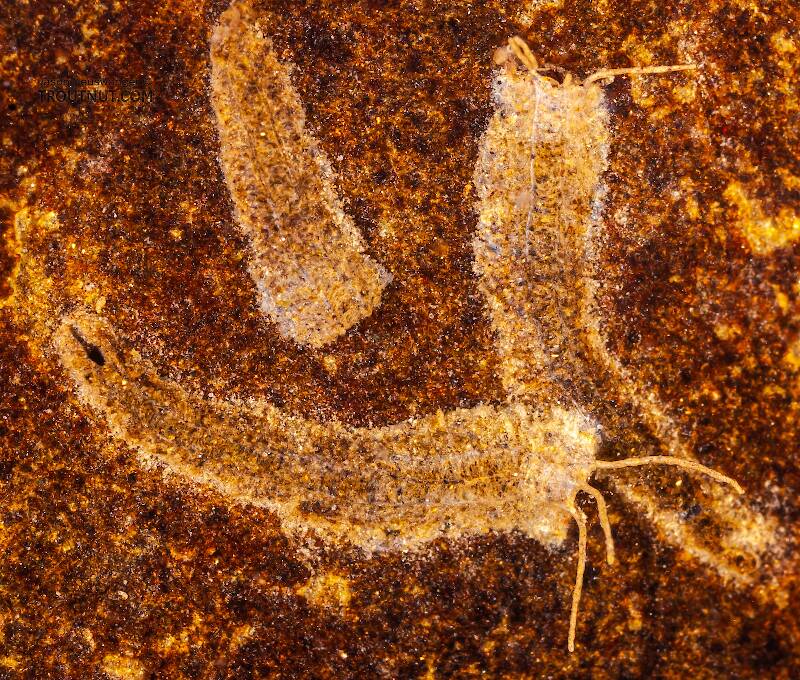
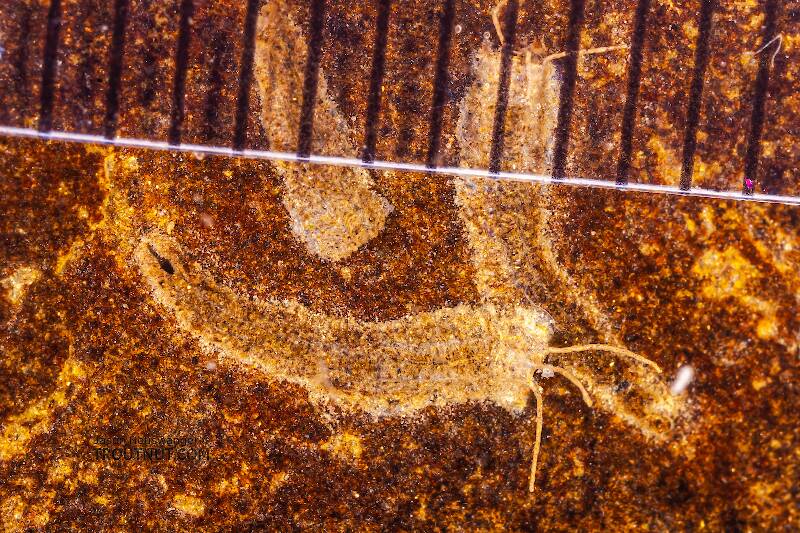
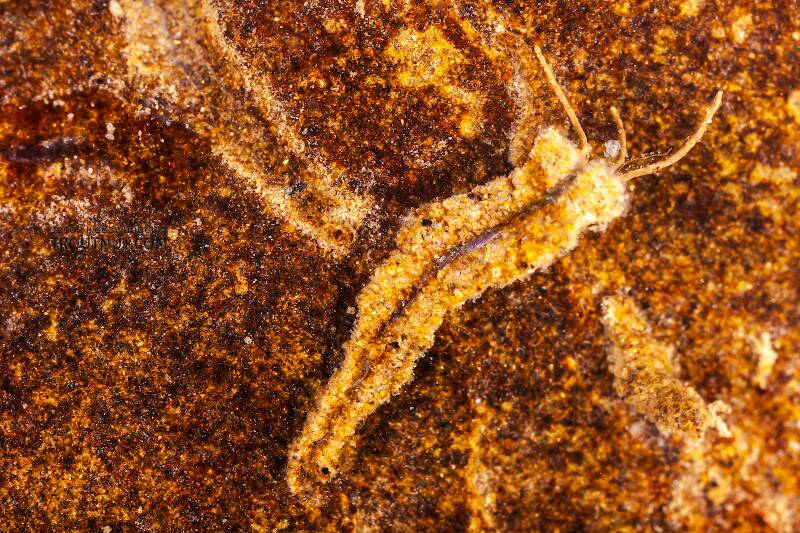
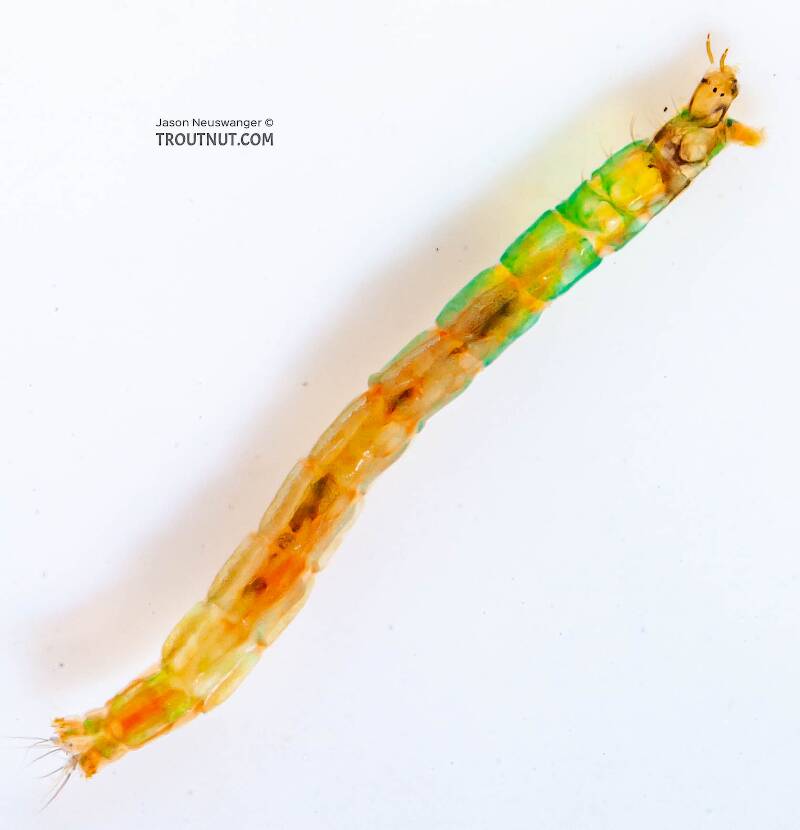
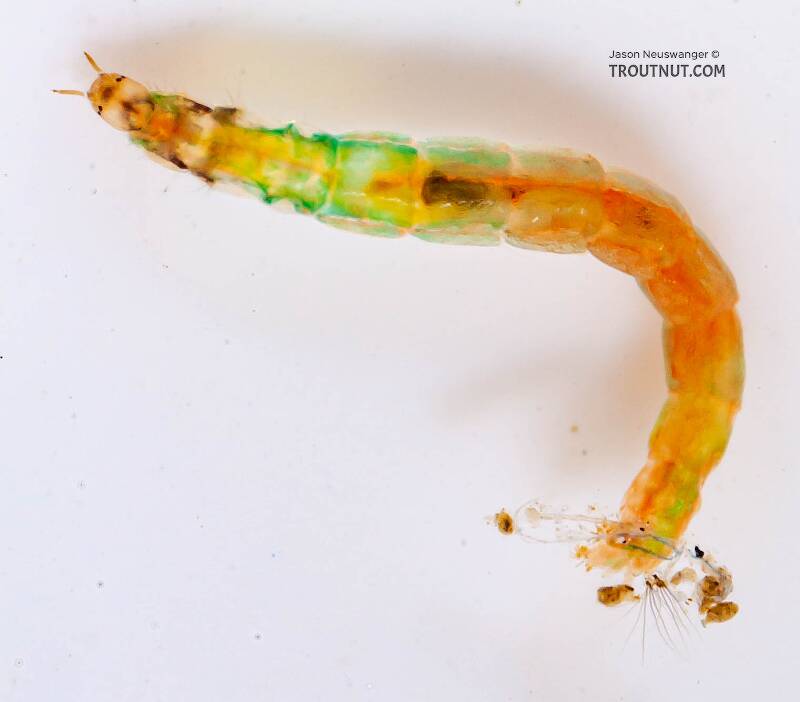
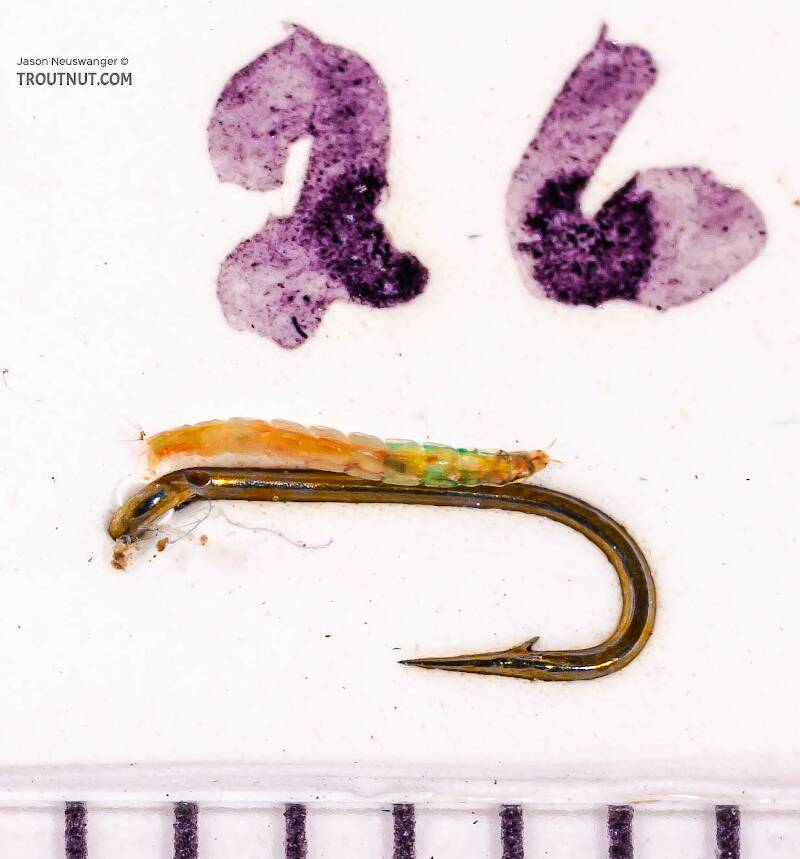
This midge was collected from Cayuta Creek in New York on April 14th, 2007 and added to Troutnut.com by Troutnut on April 22nd, 2007.
Discussions of this Larva
lines on front
1 replies
Posted by Mike28 on Mar 27, 2014
Last reply on Mar 28, 2014 by Entoman
I have a small tank with some of these on the rocks and noticed the midges coming out and cleaning the lines so I talked to my stream ecology professor and he told me I have rheotanytarsus and along those lines there are small lines of silk that they use to collect food just in case anyone was still wondering.
Midge
3 replies
Posted by DMM on Apr 22, 2007
Last reply on Apr 23, 2007 by Troutnut
I believe this is Rheotanytarsus
Start a Discussion of Larva
Rheotanytarsus Midge Larva Pictures
Collection details
Location: Cayuta Creek, New York
Date: April 14th, 2007
Added to site: April 22nd, 2007
Author: Troutnut
Date: April 14th, 2007
Added to site: April 22nd, 2007
Author: Troutnut

